| Columns Retired Columns & Blogs |
Give me Liberty or give me Kalista :-) .............
I measured the Mytek Liberty with my Audio Precision SYS2722 system (see the January 2008 "As We See It"), using both the Audio Precision's S/PDIF outputs and USB data sourced from my MacBook Pro running on battery power with Pure Music 3.0 playing WAV and AIFF test-tone files. Apple's USB Prober utility identified the DAC SE as "Liberty DAC" from "Mytek Digital," its serial number as "03003-1801-168," and confirmed that its USB port operated in the optimal isochronous asynchronous mode. Apple's AudioMIDI utility revealed that, via USB, the Mytek Liberty accepted 24-bit integer data sampled at all rates up to 384kHz, and that its AES3, TosLink, and coaxial S/PDIF inputs accepted PCM datastreams with sample rates up to 96kHz. With data sampled at 192kHz, however, the outputs muted from all but the USB input.
The Mytek Liberty's maximum output level at 1kHz from the balanced TRS, unbalanced RCA, and headphone outputs was 2.5V, which is 1.9dB higher than the CD standard's 2V. The output impedance was 75 ohms from the line-level outputs at all audio frequencies, but too low to measure accurately from the front-panel headphone jack.
The outputs inverted absolute polarity, and the Liberty's impulse response with 44.1kHz data was a short, minimum-phase inverted pulse (fig.1). With white noise sampled at 44.1kHz (fig.2, magenta and red traces, footnote 1) there was a slow rolloff above the audioband, this typical of the MQA upsampling filter that is applied to PCM data. Consequently, the aliased image of a 19.1kHz tone at –3dBFS (cyan and blue traces) was suppressed by <20dB. I usually use a full-scale 19.1kHz tone for this test, but there was a lot of aliased image energy in the audioband with this signal. However, harmonic distortion is very low in this graph.
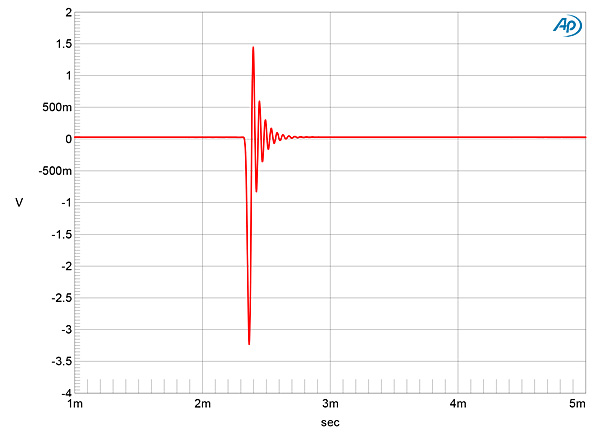
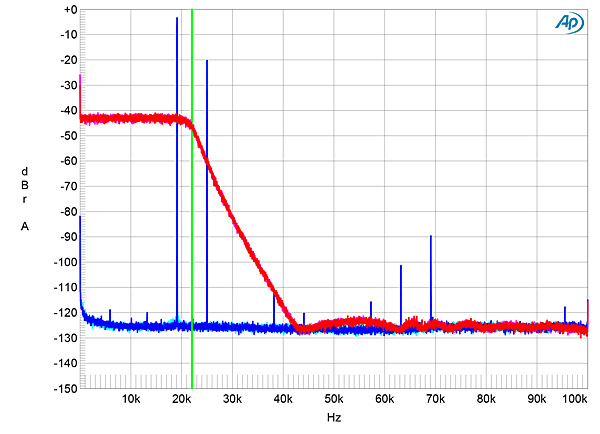
Fig.3 shows the Mytek's frequency response at its unbalanced outputs at sample rates of 44.1, 96, 192, and 384kHz. (The headphone-output responses were identical.) The MQA upsampling filter rolls off relatively slowly above each Nyquist frequency (half the sample rate). The Liberty's channel separation (not shown) was excellent at >120dB below 1kHz, and still 110dB L–R and 97dB R–L at 1kHz. The low-frequency noise floor was commendably free from power-supply–related spuriae (fig.4).
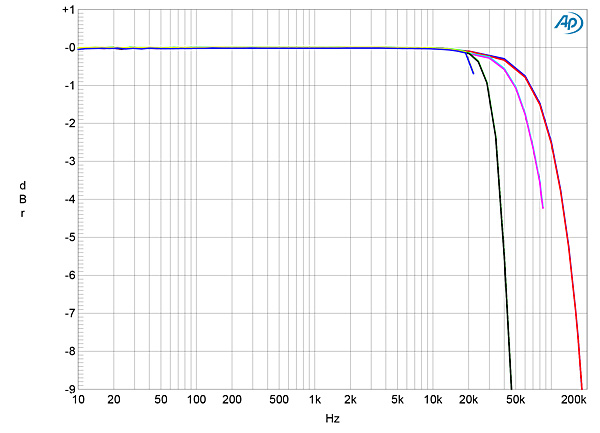
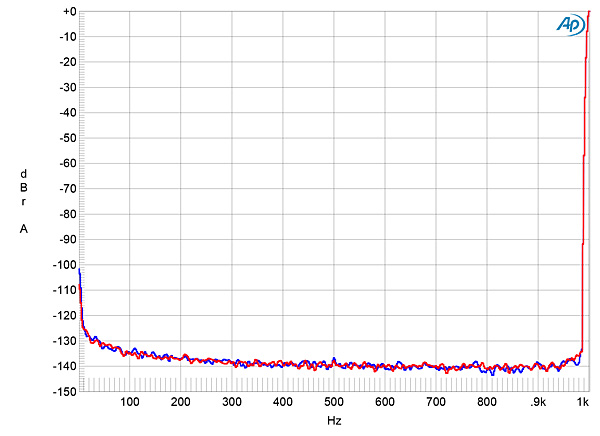
Increasing the bit depth from 16 to 24 with a dithered 1kHz tone at –90dBFS lowered the noise floor by 15dB or so (fig.5). This suggests resolution of almost 19 bits. With undithered data representing a tone at exactly –90.31dBFS (fig.6), the three DC voltage levels described by the data were well resolved, with a symmetrical waveform and no DC offset. With undithered 24-bit data, the result was a clean sinewave (fig.7).
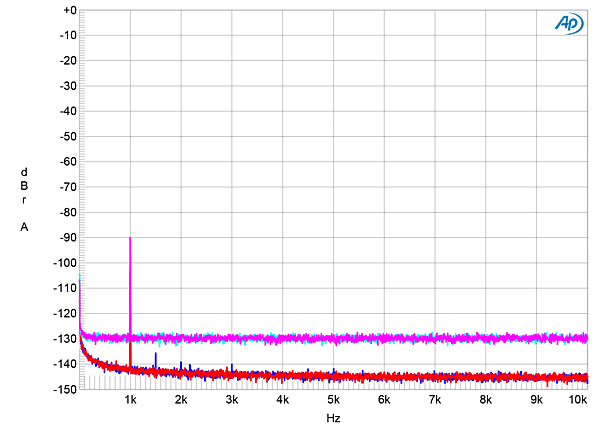
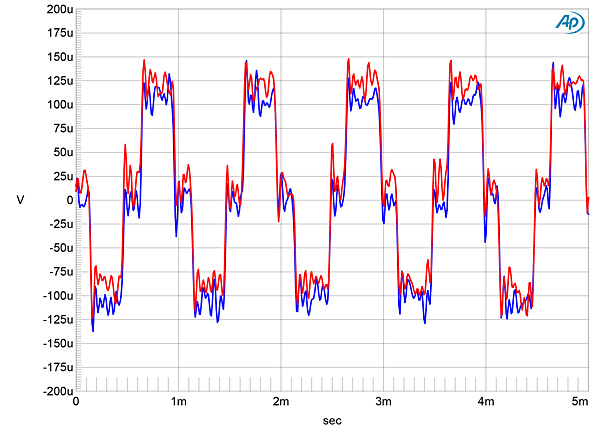
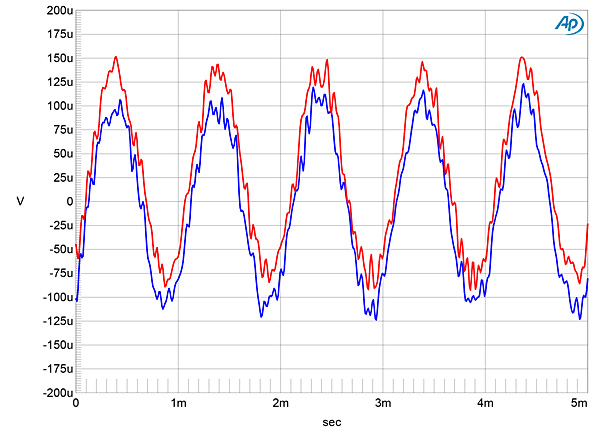
As revealed in fig.2, harmonic distortion was very low. With a full-scale 50Hz tone into the punishing 600 ohm load, the third harmonic was the highest in level (fig.8), but this was at a negligible –106dB (0.0005%)! The poor ultrasonic rejection visible in fig.2 resulted in a multitude of aliased images in the audioband with a full-scale mix of 19 and 20kHz tones (fig.9). However, reducing the signal level by 3dB produced a significant reduction in the audioband image energy (fig.10). The actual intermodulation distortion is extremely low, the 1kHz difference product, even into 600 ohms, lying at around –120dB (0.0001%). Music rarely has significant energy toward the top of the audioband, so fig.10 more correctly characterizes the Liberty's behavior.
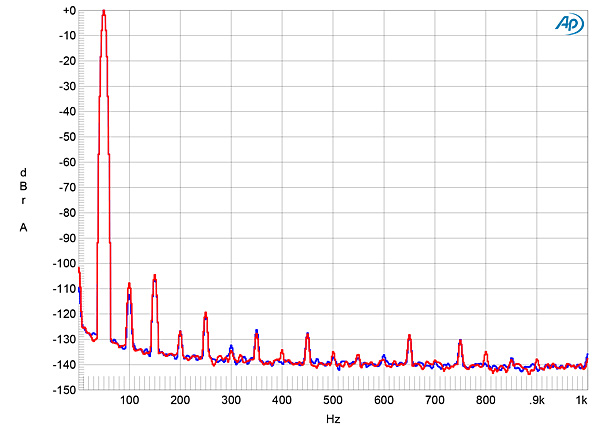
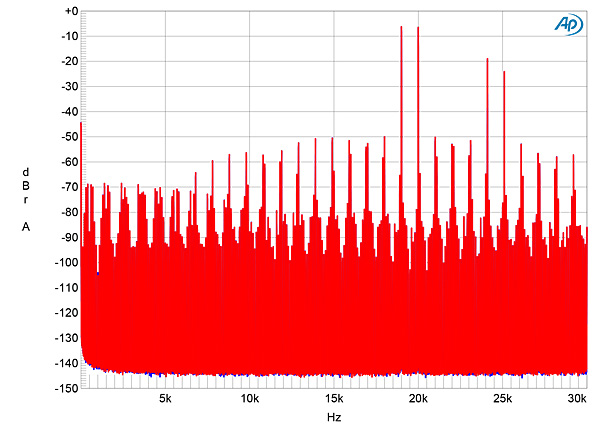
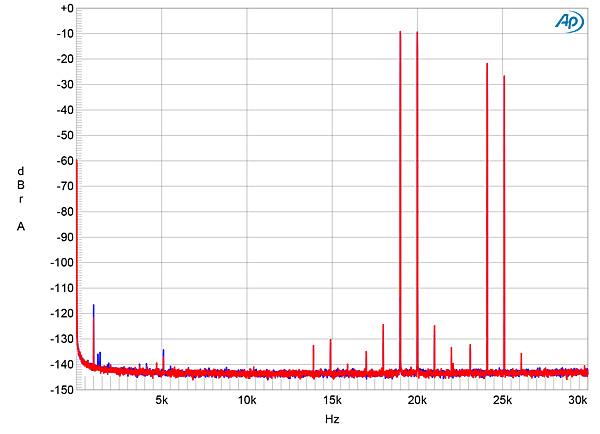
When I tested the Mytek Liberty for its rejection of word-clock jitter using undithered 16-bit J-Test data, the odd-order harmonics of the low-frequency, LSB-level squarewave were all at the correct levels (fig.11, sloping green line). This excellent behavior was identical when I repeated the test using the USB input—and when I tested with 24-bit J-Test data, the spectrum was completely free from any spurious tones or sidebands (fig.12).
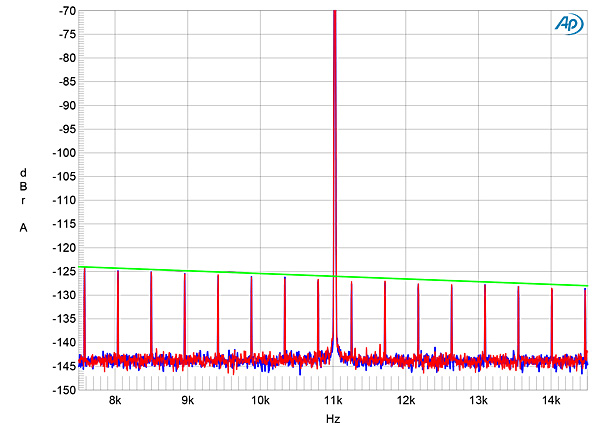
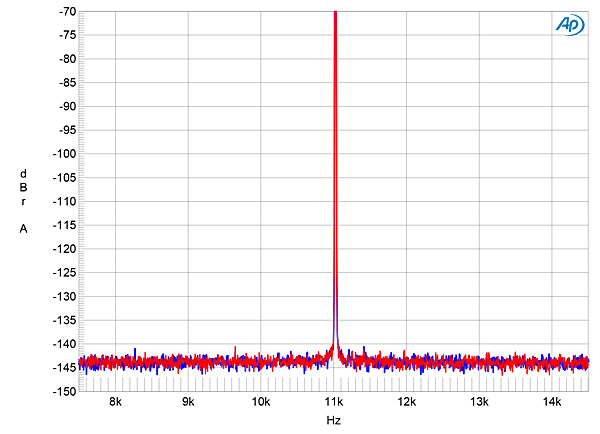
The Mytek Liberty's measured performance indicates excellent digital and analog engineering, especially considering its affordable price.—John Atkinson

Give me Liberty or give me Kalista :-) .............

Try a Martin DRS2, beautiful sounding, a little dark, really well set up.

DACs are not much differing in perceivable performance. Even Jason Stoddard has mentioned that DACs are boring. ( I think he's right )
It seems like Audiophile's mostly 24k Golden Ears struggle to describe significant performance differences in DACs.
Tyll's 2015 "Big Sound" Event in Montana had nobody pointing out one DAC as the Outperforming Design ( including the often praised but dirt cheap Yggy from Schiit ).
It seems to make sense that this $1000 DAC will please about as much as any other DAC out there.
I like the Mytek Liberty, I'd like it more if it were named the Warsaw but not enough to be inspired to impulse "Buy-It-Now". hmm.
Thanks for tell'n us about it.
Tony in Michigan

Because of ever changing digital tech, getting ahead of state of the art in DACs and streamers seems to be nearly impossible. I too think that DACs these days are all a little closer to state of the art than not within reason (DCS not withstanding.) As always, a preferred sonic signature will be available at all price ranges. If you like incisive without harshness, Mytek DACS are ideal. A similarly priced DAC that's to me a perfect blend of detail and warmth without venturing into overly euphonic coloration is the AYRE CODEX. Speaking of euphonic coloration I'm also intrigued about the Border Patrol DAC but havent had a chance to listen.

Dudley, you review overpriced audio gear—gear that is the epitome of bling. Some self reflection in the future please, if you can manage. Thank you.

Dudley, thanks for your enjoyable review. I'm getting more and more interested in this DAC - you obviously like it.
But here's the problem....you did what most audio reviewers do, hoping nobody notices. Instead of comparing the Liberty with key competitors that anyone would cross-shop if they were in the market for the Liberty, you pick out a couple of irrelevant DAC's waaaaay outside the Liberty's bracket.
No comparison to Border Patrol, or RME, or appropriate Schiit models for example. And we all know why, don't we? You'd have to start ranking them, and that would obviously make the unfavored brands unhappy. So instead of that you do what you always do - you say something like "....it's almost as good as xxx brand costing more than twice as much." So everyone's happy, right?
No hurt feelings. Everyone's a winner.
The trouble is, it makes the whole exercise a pointless sham - don't you agree?
Go on - tell us what you really think about this DAC. Be dangerous.

Mr. Dudley, a Editor for Stereophile Magazine, has years of experience writing articles and reviews. I like reading his articles, and find them informative. Art (Arthur) is his name, in case readers missed it.

Apologies to Art. The use of his surname was entirely accidental but thanks for pointing out the error and correcting me. I'm delighted that you enjoy Art's comparisons and feel no reason to comment. I also enjoy his reviews, in spite of this facet of them. They would be more useful if the comparisons were realistic, in my personal opinion. But we've all got opinions, I grant you that.

The world is grateful for your intervention, Mr. Manners. Where would we be without you?

If that was a serious question directed at me - my guess is that you'd be with your head buried deep in the sand. Afraid of asking a simple question or pointing out a blatant truth.
I'm sure Mr Dudley doesn't mind the odd question that challenges his findings. If he does, that would be sad. But I suspect he'd prefer to do without the creepy protection of fan boys and speak for himself.

Sorry, I must have clicked on a wrong reply button. The busybody is the one above who pestered you about calling out Dudley.
I’m with you on this one. Apologies for the mess.

From the comment about busybodies, it would seem the pot is calling the kettle black as that is exactly what a busybody would do. Websters has a great definition! Of course, my comment fits right in, but at least I'll admit that. Whether I agree with Mr. Dudley or not, I'll have the decency to address him with a bit of respect and common courtesy. I'm not in the habit of addressing someone by their last name, but I suppose someone with an axe to grind might, and you don't agree with someone's point view, then it seems all bets are off. I'm anxious to hear what vitriol I might receive in response!
Cheers,
Terry

The use of Art's last name was accidental, apologies were offered several posts ago. Please relax and focus on the substance of the post, if you can manage to get past that typo. Thanks.

If you think that Art Dudley has earned your respect, that's good for both of you. His earning my respect is still work in progress. :))

A good DAC really opens up the sound at the front end of your system.
Done right it puts life into the music.
Done poorly it wrecks everything that comes after it in your chain.
MQA is the new decoding scheme which Tidal in particular brings into your home---sometimes as a better sound if the stars are aligned.
This Mytek DAC is relatively affordable and does many things very well, including a low cost entry into all things MQA.
I will buy one as one of my internet systems is due for an update.
Thanks Art.
Nice review.

I'm currently using a Metrum Acoustics Octave NOS dac. Is this the Mytek dac a better step up?

I love this test signal: "a crosspicking pattern in which two downstrokes are played in rapid succession, followed by a similarly rapid upstroke; the first note in each pair of downstrokes is played as a rest stroke—the plectrum comes to rest, however briefly, against the adjacent string as the note is played—giving that note a distinctive attack."
Most audio specifications are obsessed with frequency and spectrum, which is the defining characteristic of vowels or their musical equivalents, tones. Frequency spectrum implies a continuous, repetitive waveform idealized as superposition of sinusoids. (Fourier math only works if you integrate time from negative infinity to positive infinity, have infinite resolution and keep the complex phase space information intact)
Music, like speech, devotes 95% of the time and energy to vowels/tones; but the signalling information content of the other 5% is at least as important. These sounds are the consonants: how the tones start, stop and transition. Accurate reproduction of the musical expression means getting the waveforms and timing of the consonants correct, even when they are a fraction of a millisecond.
It is in this relatively un-explored area that many audio debates fall: analog vs. digital, SS vs. Tube and metal vs. fabric domes, high order vs. low order crossovers. Anti-aliasing makes it nearly impossible to follow musical consonants to the limits of hearing resolution digitally (around 3 microseconds). This is where over-sampling and ultra-low jitter come in, plus any other mathemagic discovered at Mytek, dcs, etc.
OTOH, CD aficionados have trained their hearing to pre-ringing and other digital artifacts that are "impossible to hear" according to the prevalent machine model of hearing, which has been distorting audiological research for 150 years since Helmholtz declared the cilia acted like tuning forks.
For that matter, every knob, function and plug-in that changes the sound of the signal inherently introduces temporal distortion. All processing, whether analog or digital, has to conflate more than one point in time of the original microphone signal and changes the waveforms of consonants. This is temporal distortion.
Audiophiles learned to by-pass tone controls, and yet practically all recordings use equalization, dynamic modification or delay operations (reverb and echo). All of these distort the musical consonants.
In fact, the act of mixing two microphone signals together or splitting one signal into left and right (panning) distorts the consonants and any natural reverb present in the recording; so mixing and mastering are distortion.
Kudos for escaping this vicious circle! Have to check out that recording.